Physical Address
304 North Cardinal St.
Dorchester Center, MA 02124
Within a space of less than a few centimeters, the temporal bone contains highly specialized small anatomic structures that allow for hearing and balance.
The temporal bone is composed of five parts (petrous, tympanic, squamosal, mastoid, and zygomatic) and is subdivided as the inner ear, middle ear, and external ear.
The inner ear converts mechanical pressure into electrical signal to provide hearing and balance function. The inner ear contains the cochlea, vestibule, semicircular canals, cochlear aqueduct, vestibular aqueduct, oval window, and round window. The cochlea has 2½ turns, and the cochlear nerve enters the cochlea through the cochlear aperture to terminate on an osseous structure called the modiolus. The modiolus is attached to an osseous structure called the spiral lamina, forming a structure similar to a threaded screw. The spiral lamina has two membranes that separate each turn of the cochlea into three compartments. From lateral to medial the layers are the scala vestibuli → vestibular membrane (also known as Reissner membrane) → scala media (also known as cochlear duct) → basilar membrane → scala tympani. The scala vestibule terminates at the oval window, and the scala tympani terminates at the round window. The scala media contains the organ of Corti, which has the sensory receptors of the cochlear nerve and contains endolymph, whereas the scala tympani and scala vestibuli contain perilymph. The vestibule contains the utricle and saccule and with the three semicircular canals (lateral, superior, and posterior) provides balance information.
The middle ear is subdivided into the epitympanum, mesotympanum, and hypotympanum and contains the ossicles (malleus, incus, and stapes) ( Figure 13.2 ). The first branchial apparatus gives rise to the malleus, incus, and tensor tympani, while the second branchial apparatus gives rise to the stapes and facial nerve. The epitympanum communicates with the mastoid through the aditus ad antrum and the nasopharynx through the eustachian tube.
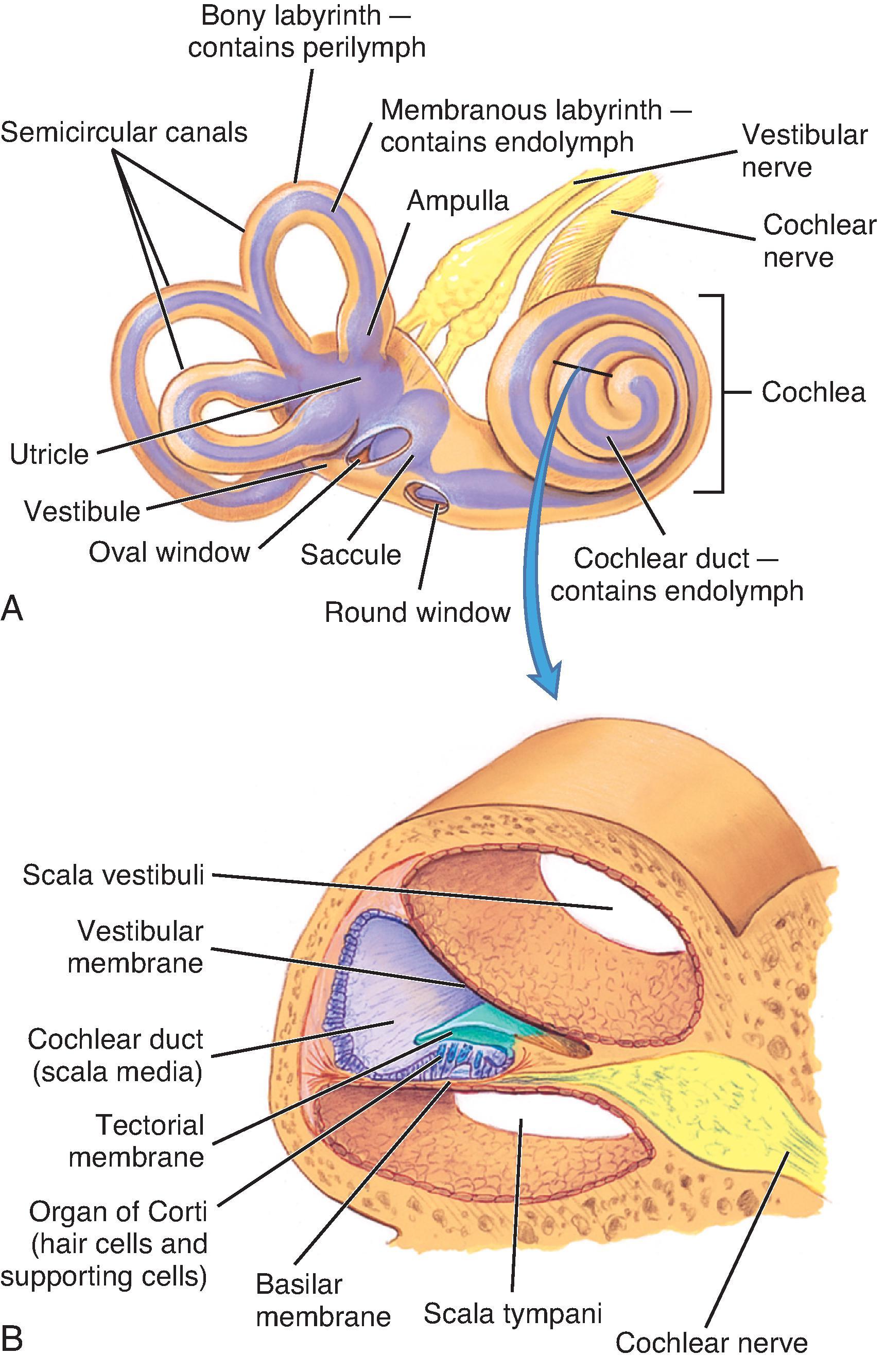
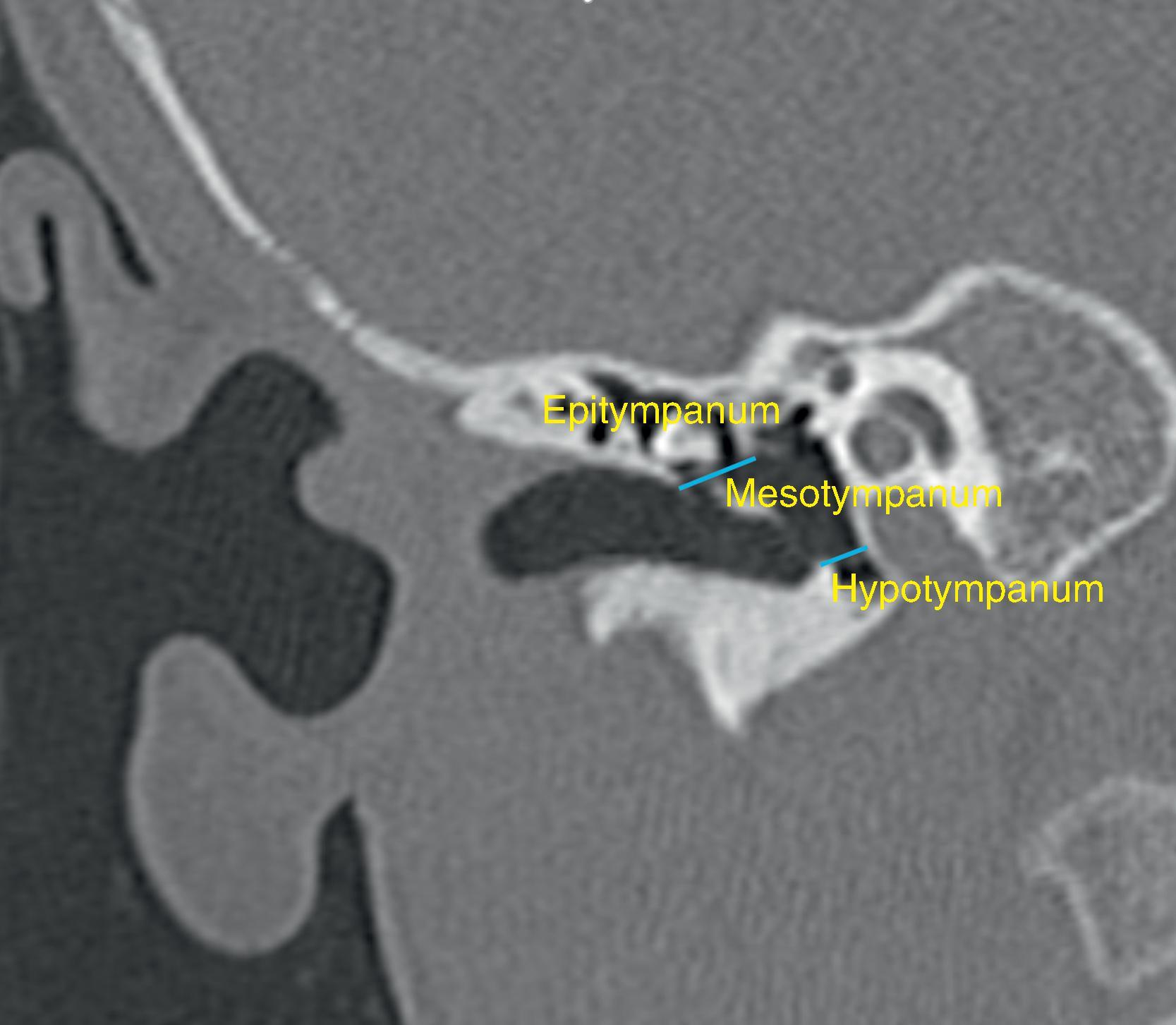
The external ear includes the auricle and external auditory canal and arises from the first branchial apparatus.
The facial nerve in the temporal bone consists of the canalicular, labyrinthine, genu, tympanic, and mastoid segments and exits the temporal bone at the stylomastoid foramen.
Malformations of the temporal bone can result in sensorineural and/or conductive hearing depending on the anatomic structure involved.
An imaging approach to malformations of the temporal bone should include a systematic assessment of the inner, middle, and external ear. Conductive hearing loss is typically a problem of the external or middle ear, while sensorineural hearing loss is a problem of the inner ear.
MRI should be performed with 3D T2W sequences with 1-mm slice thickness. The advantage of MRI over CT is that MRI allows for visualization of the cochlear nerve, whereas CT may only infer the small size of the cochlear nerve based on a small internal auditory canal or cochlear aperture.
CT allows for thin section imaging with fast acquisition, which may eliminate need for sedation in some patients. CT imaging of the temporal bone should be acquired with bone algorithm using 1 mm or less axial slice thickness and reformatted into coronal plane. Sagittal and oblique reformatted images can be helpful for evaluating ossicular erosions or malformations and for evaluating dehiscence of semicircular canals. Soft tissue algorithms should be reviewed for intracranial or periauricular abnormalities.
MRI of the temporal bone should include thin-section 3D T2W sequences with 1 mm or less slice thickness and precontrast thin section (3 mm or less) T1W imaging. Precontrast T1W imaging is useful for evaluation of T1W hyperintense signal in the inner ear, which signifies proteinaceous or hemorrhagic fluid from a labyrinthitis, as well as for masses such as lipomas or dermoid cysts which have lipid. Thin-section postcontrast T1W imaging can be added if there is need for assessing for inner ear enhancement from labyrinthitis and for a vestibular schwannoma. The advantage of MRI over CT is that MRI allows for visualization of the cochlear nerve, whereas CT may only infer small size of the cochlear nerve based on a small internal auditory canal or cochlear aperture.
The following cases illustrate common and uncommon malformations in children affecting the inner, middle, and external ear.
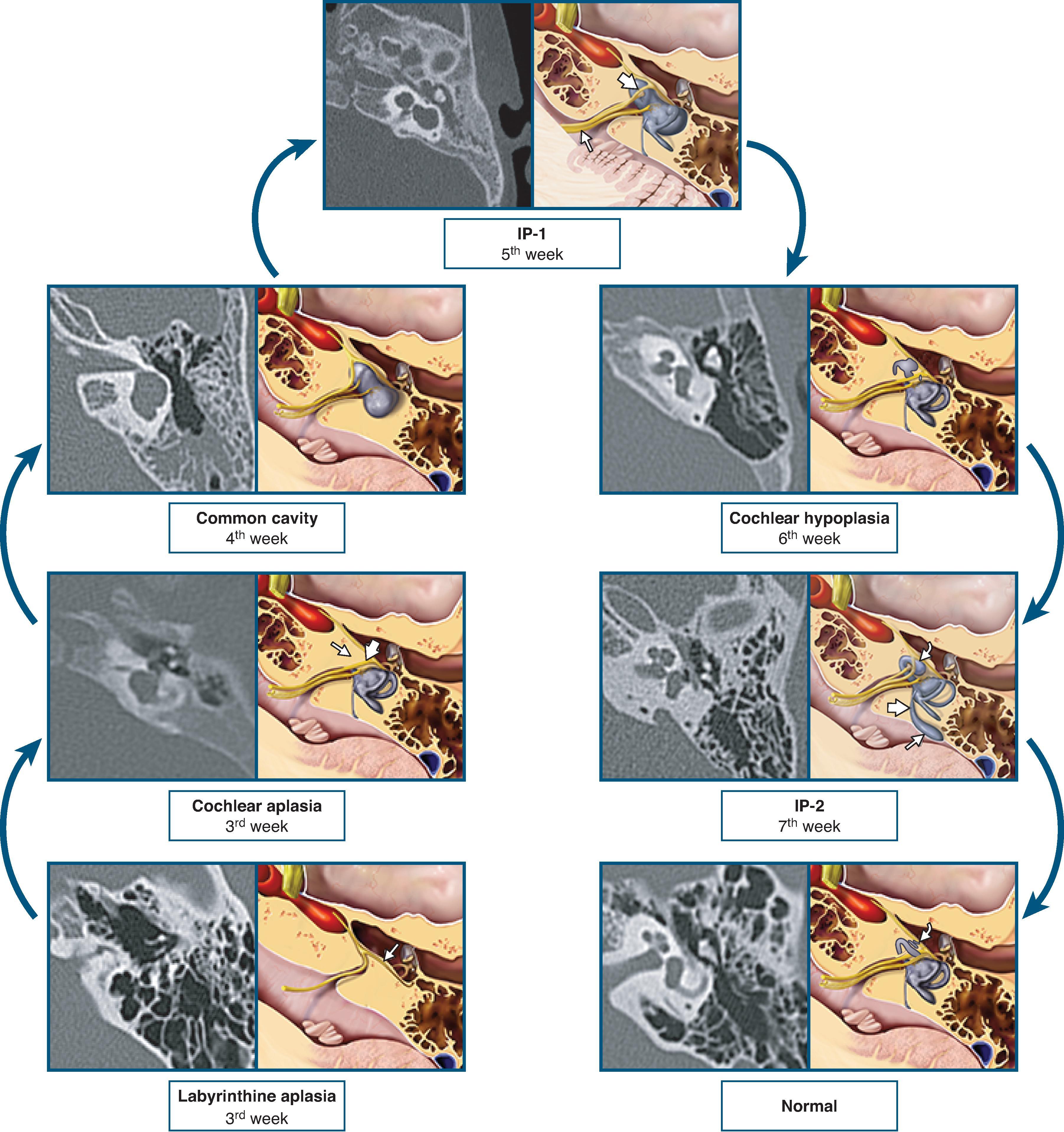
Cystic cochleovestibular anomaly
Developmental arrest in the fifth gestational week
Snowman shape/figure of 8 shape to the cochlea and vestibule
Cystic cochlear malformation, which is separate from the vestibule
Absent interscalar septum
Absent modiolus
Wide internal auditory canal (IAC)
Vestibular aqueduct rarely large
Cochlear nerve often hypoplastic
Developmental arrest in the seventh week of gestation. More common than IP-1
Malformation of the apical and middle turns of the cochlea, and normal basal turn
Absent interscalar septum between apical and middle turn
Large vestibular aqueduct
May have absent or deficient modiolus
Cochlear nerve and semicircular canals usually normal. Greater success with cochlear implant
Semicircular canals begin development between the sixth and eighth week of gestation and are complete at the 19th to 22nd weeks.
Superior canal develops first, then the posterior canal, then the lateral canal.
Earlier gestational insults will involve more of the semicircular canals. Consequently, the lateral semicircular canal is the most common canal to be malformed as well as malformed in isolation.
Lateral semicircular canal appears as a short and wide canal, often unseparated from the vestibule.
Cochlea can be normal in appearance or malformed.
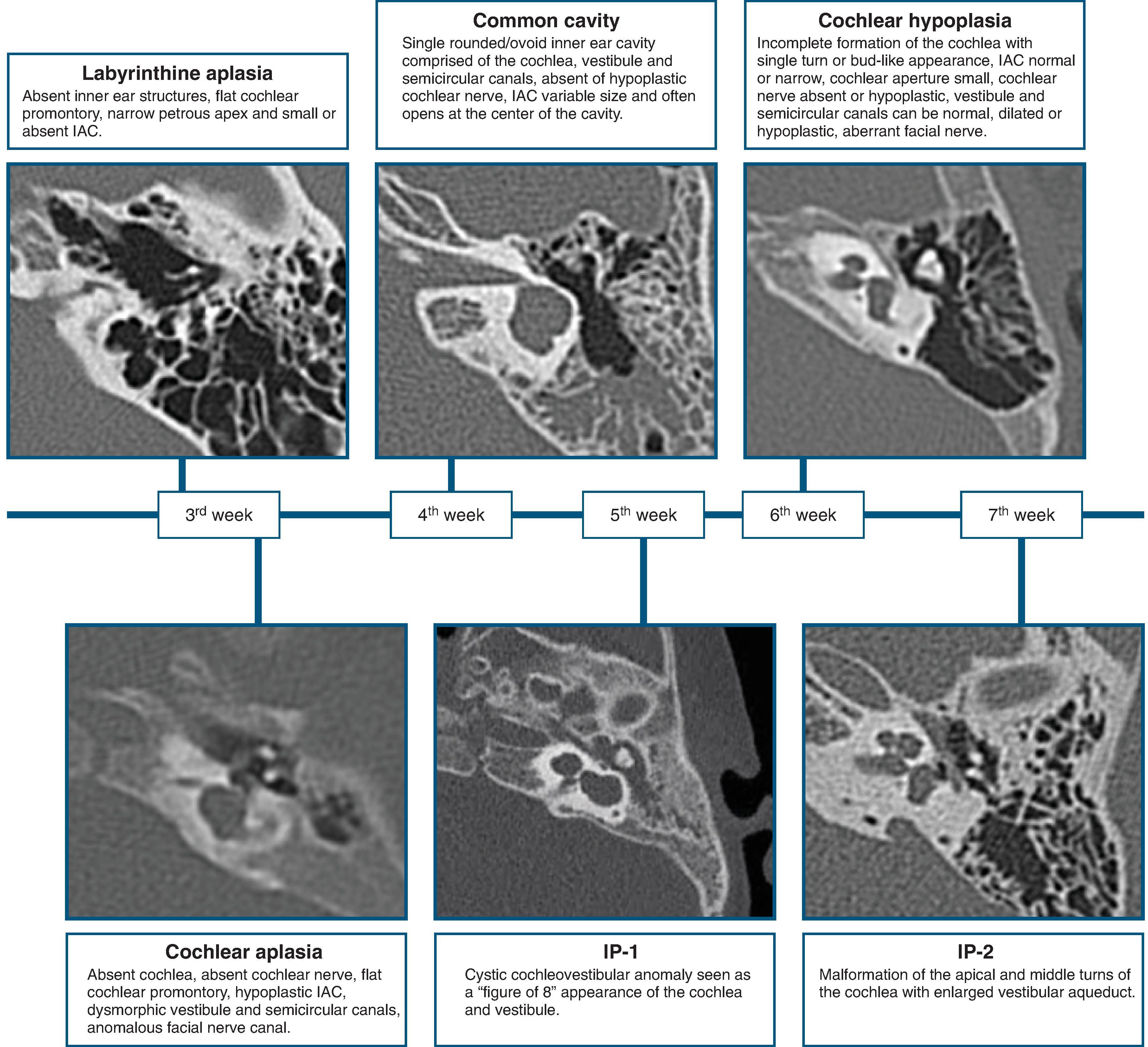
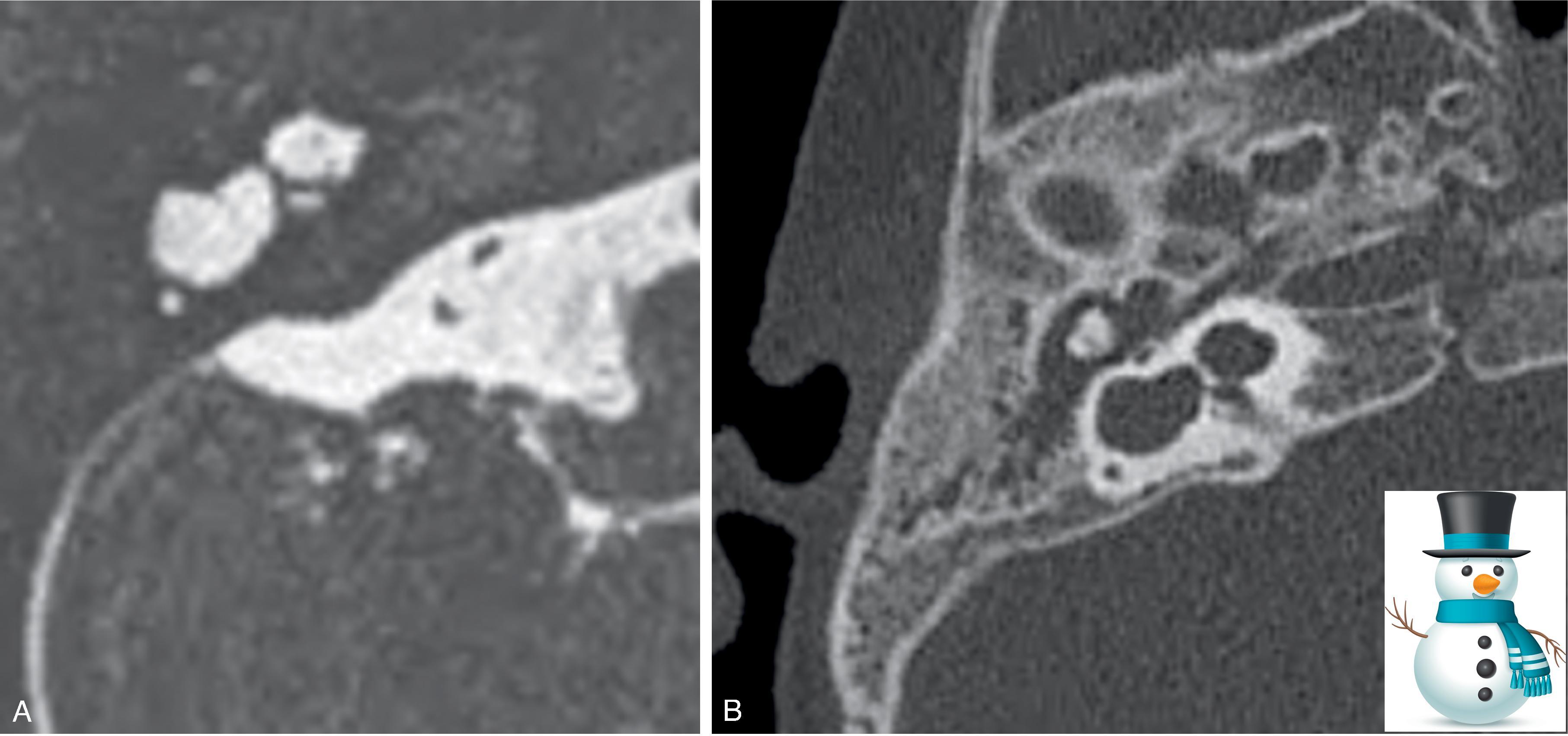
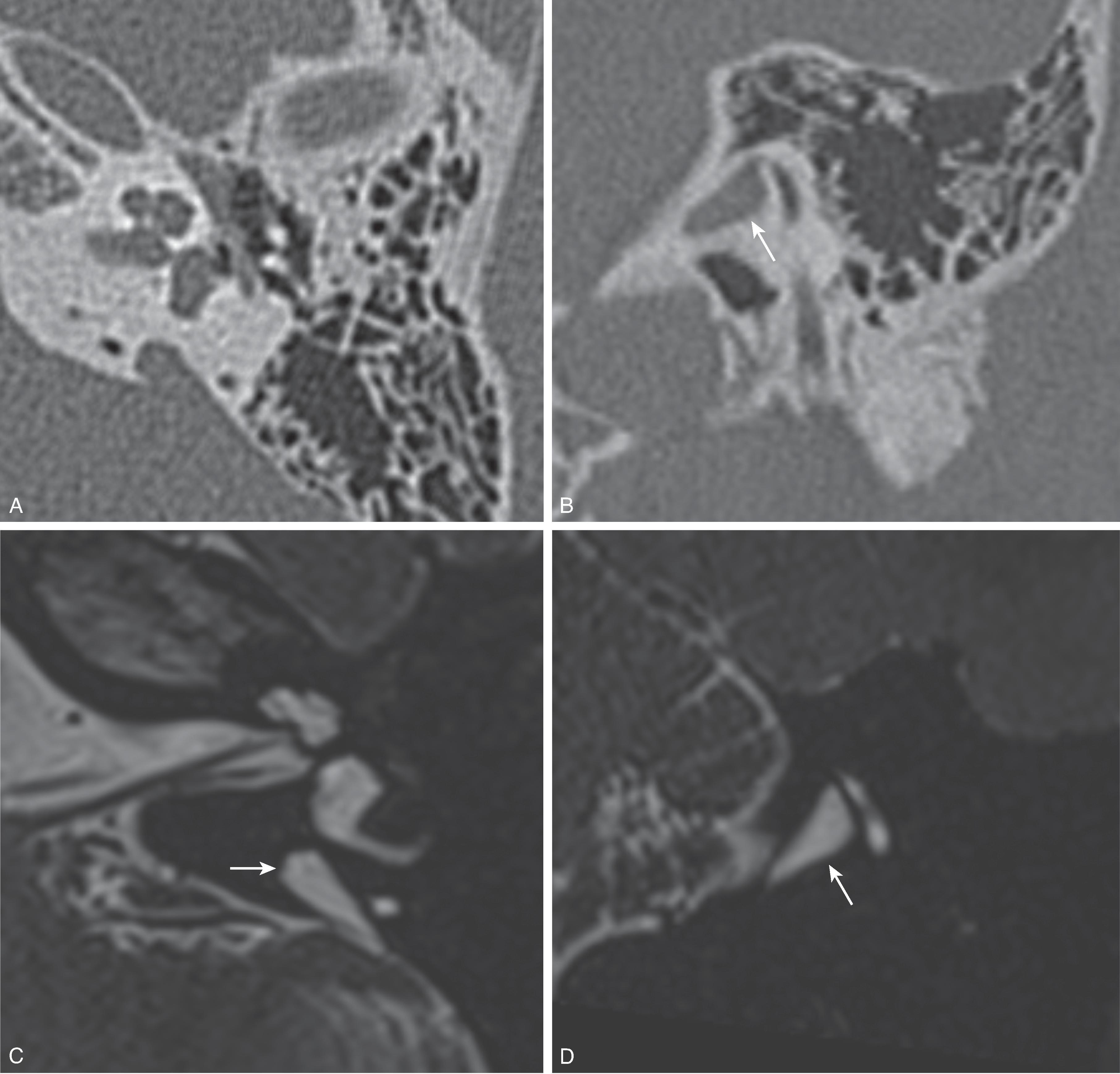
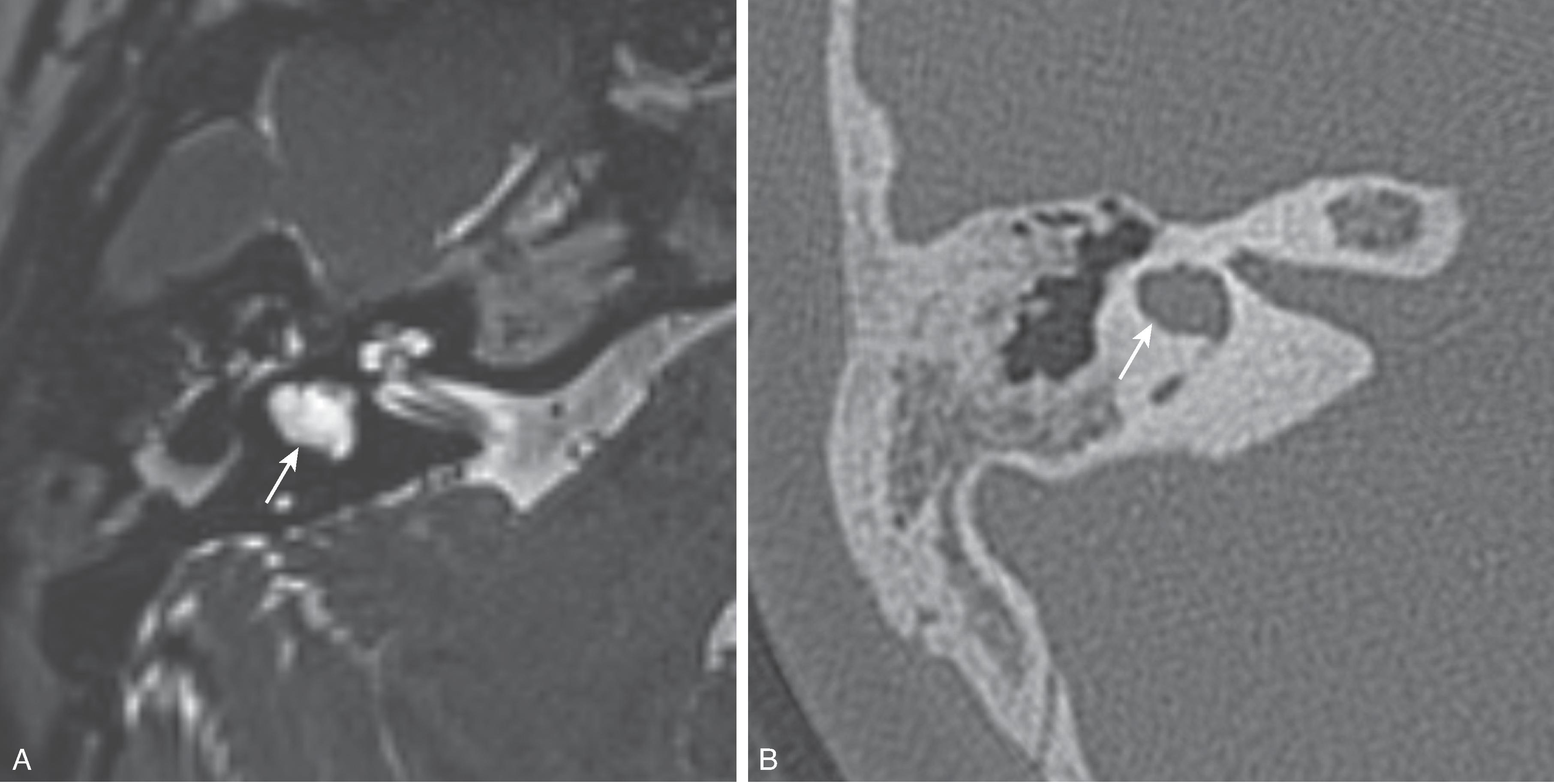
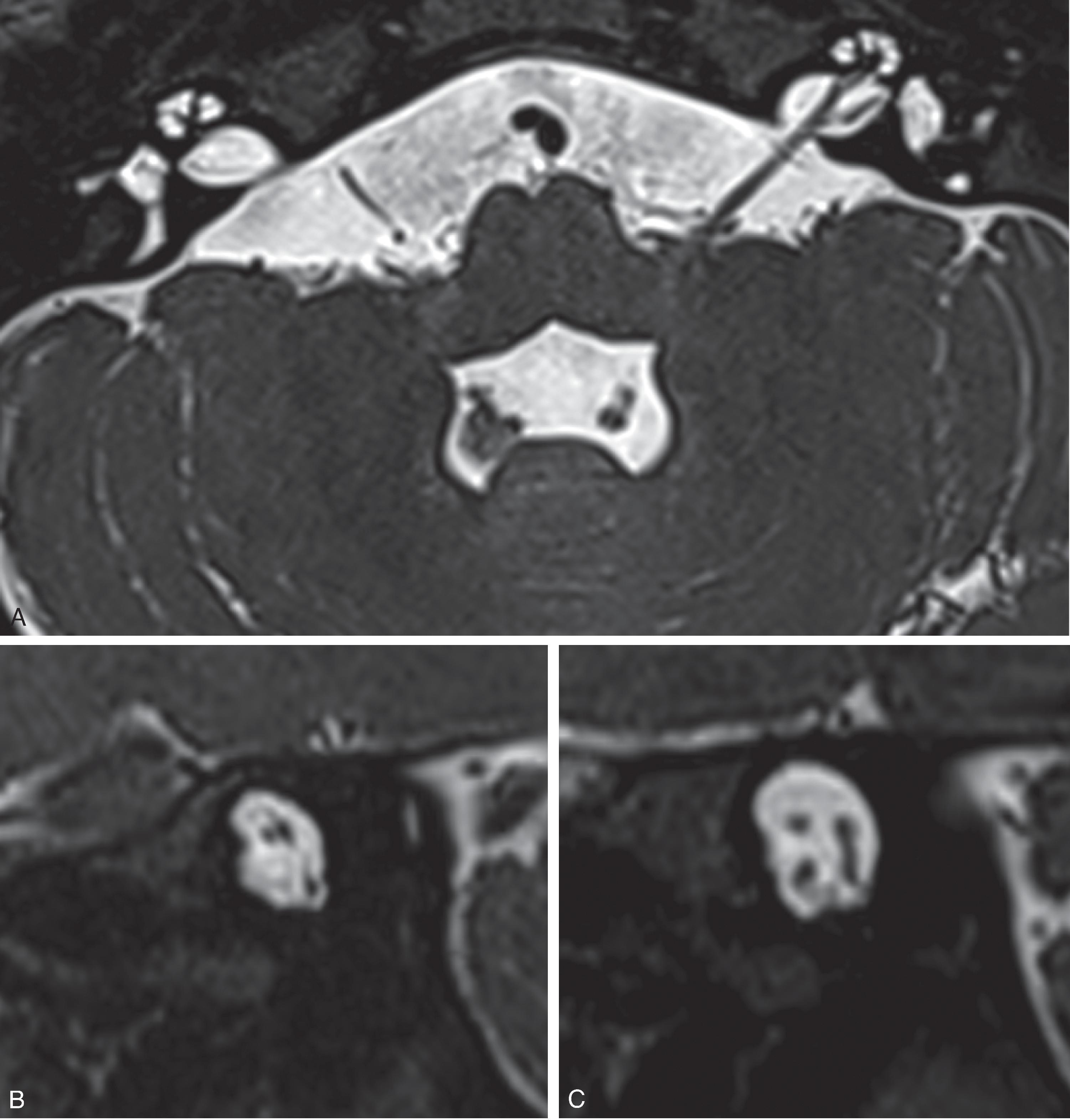
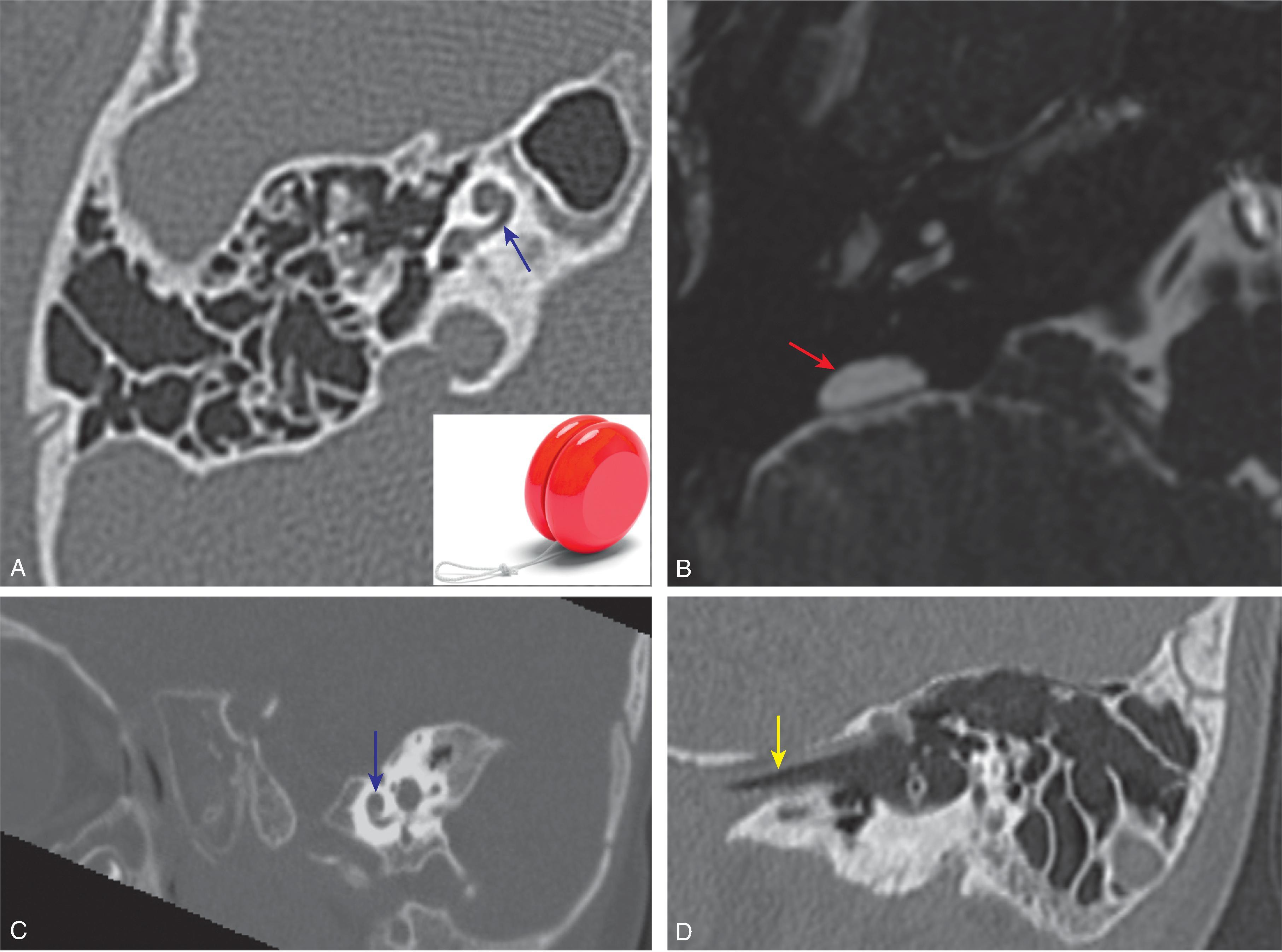
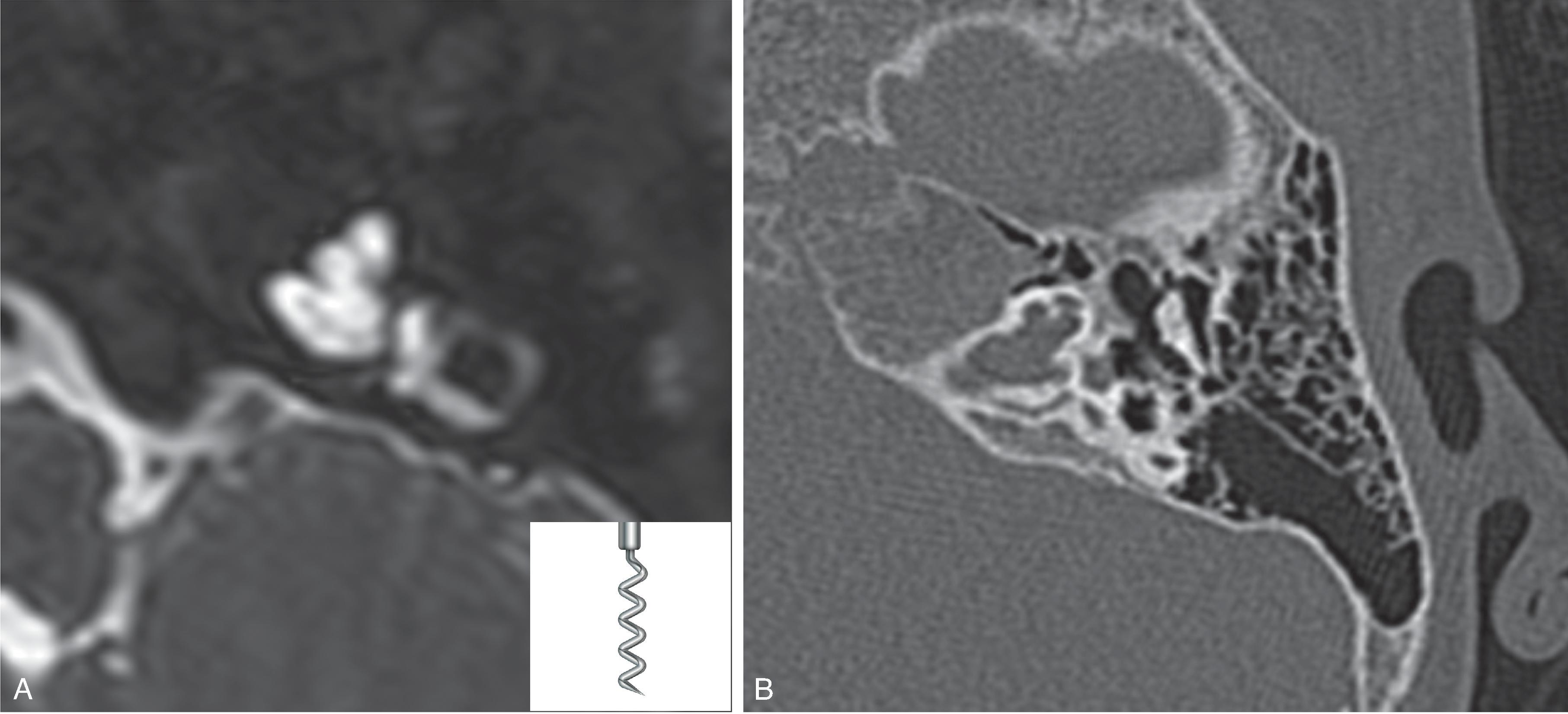
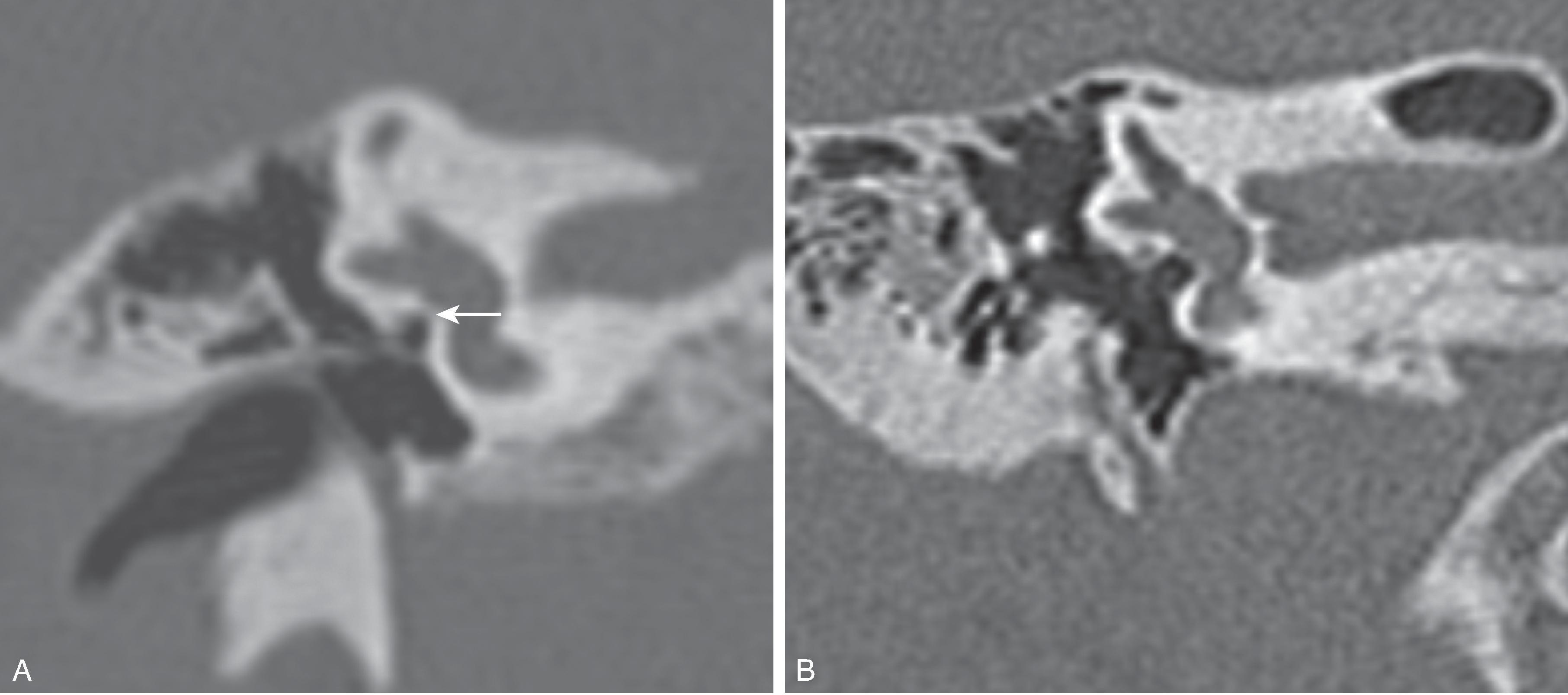
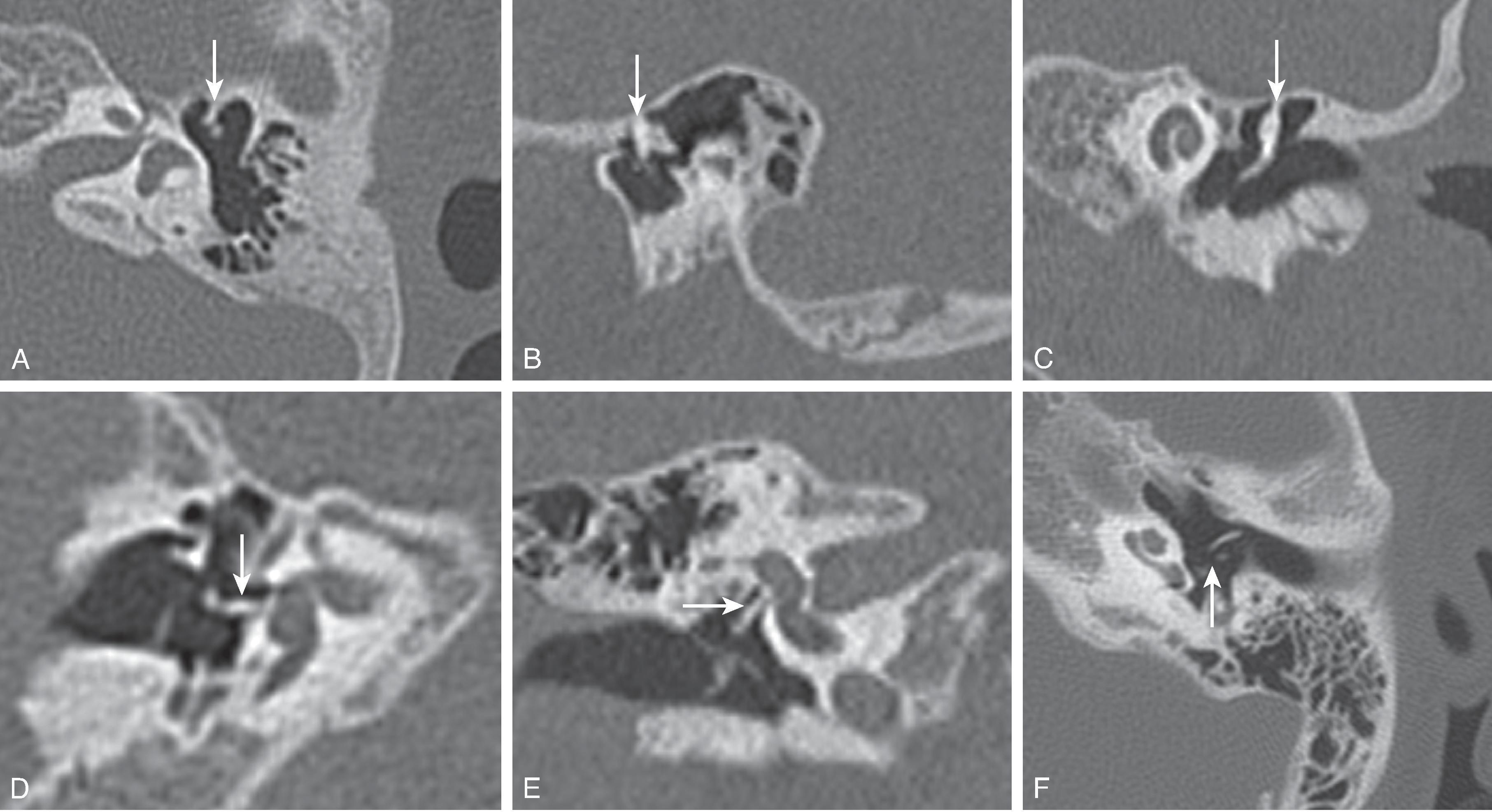


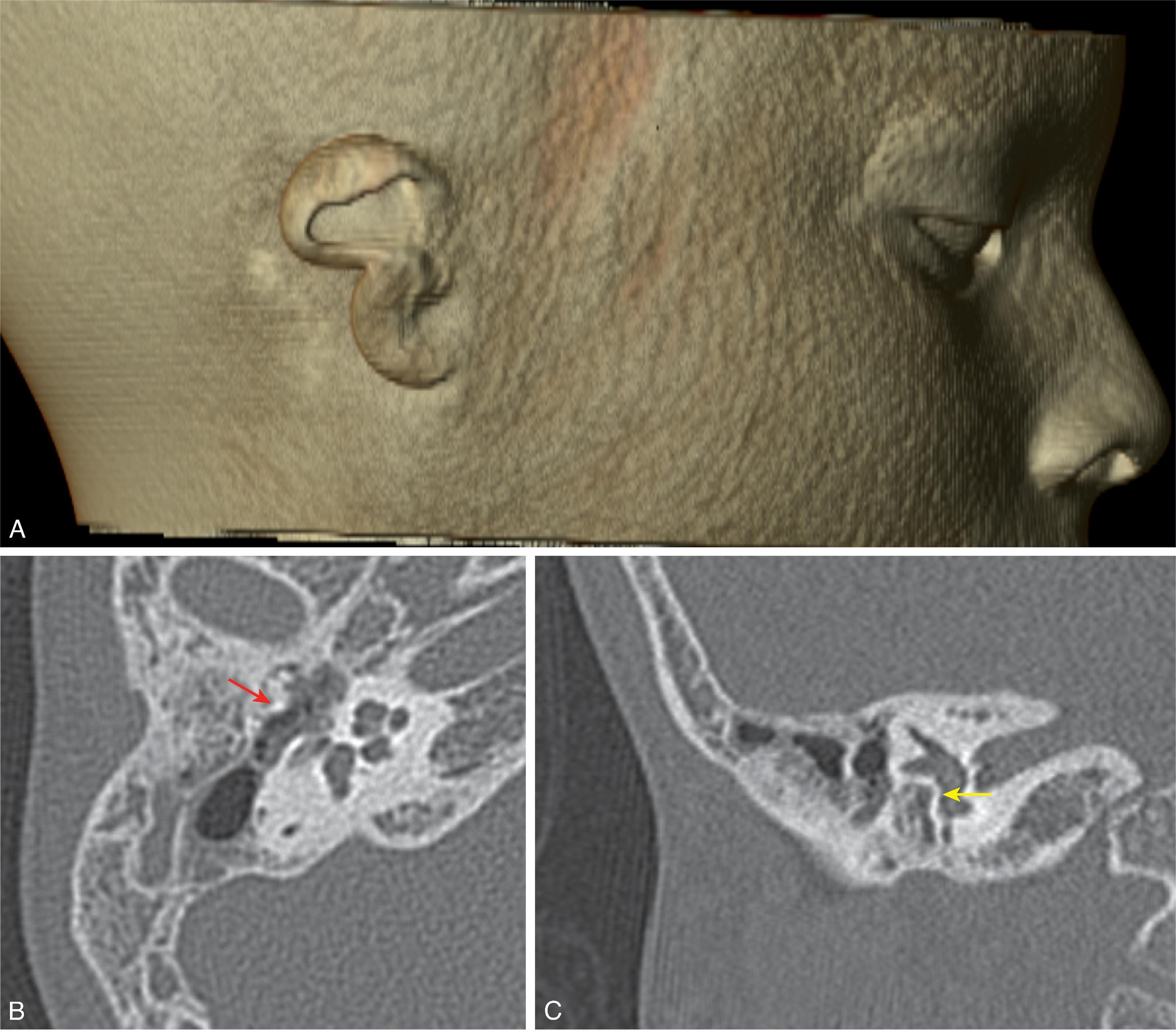
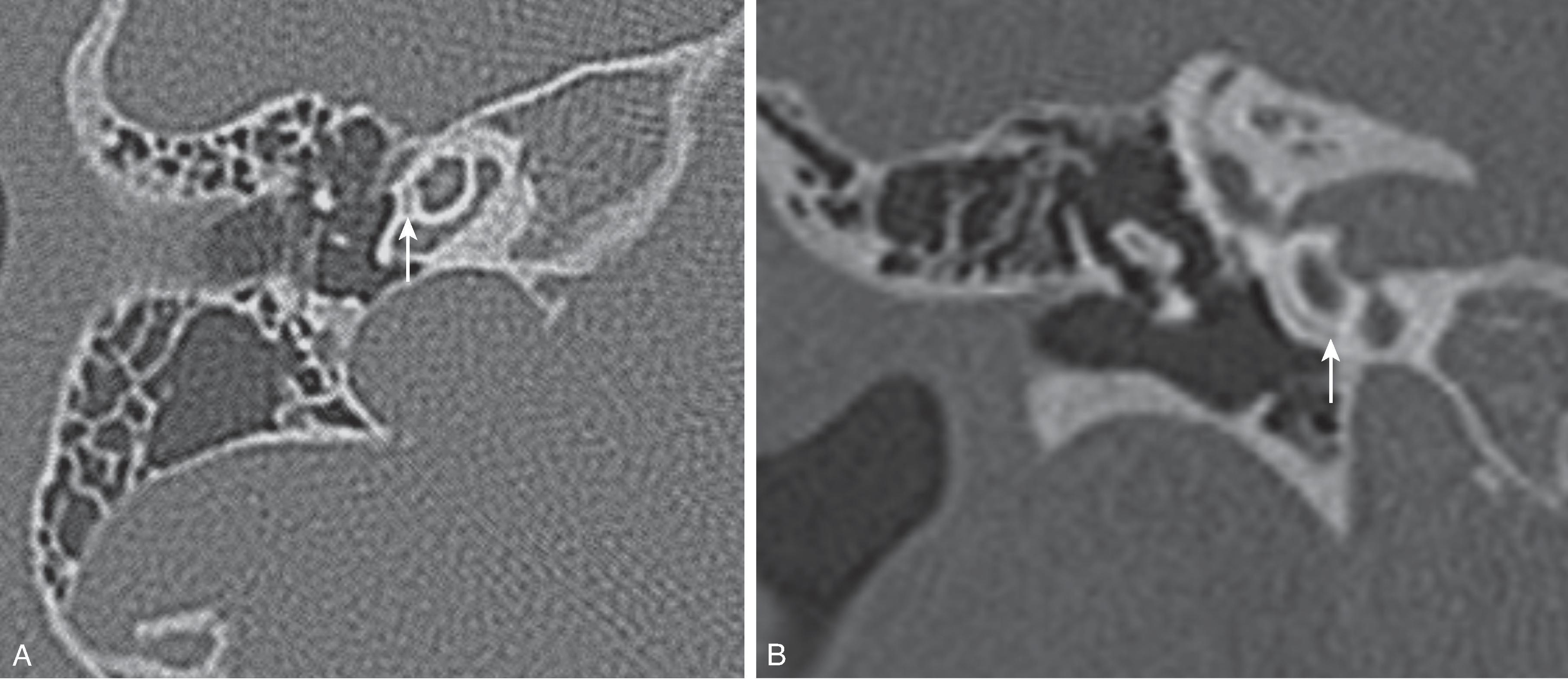
Become a Clinical Tree membership for Full access and enjoy Unlimited articles
If you are a member. Log in here